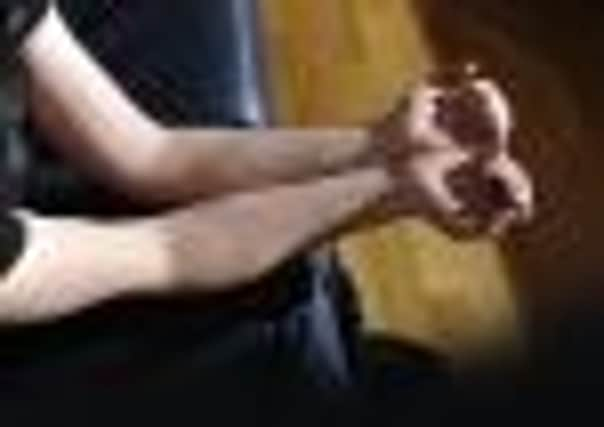Lucie Russell: Understanding self-harm is first step to ending it


Mental health problems don’t just affect particular groups; they span all races, cultures and classes, and self-harm is no exception. Self-harm is surrounded by myths and misconceptions – while it’s often just thought of in terms of cutting, self-harm, or self-injury, describes a wide range of things people deliberately do to themselves that are harmful but usually do not kill them. It’s worth noting that while self-harm is usually not an attempt at suicide, it is still highly traumatic for young people and those who care for them.
The most common form of self-harm is cutting the arms or the back of the legs with a razor or knife, but it takes many shapes, including burning, biting, hitting and taking overdoses.
Advertisement
Hide AdAdvertisement
Hide AdThe reasons vary greatly, and are specific to the individual, but a young person may self-harm to help them cope with negative feelings, to feel more in control or to punish themselves. It can be a way of relieving overwhelming feelings that build up inside, when they feel isolated, angry, guilty or desperate.
One in 12 children and young people deliberately self-harm with around 40,000 cases needing hospitalisation each year because their injuries are so severe. Those statistics alone suggest that we must do more to help young people who are turning to self-harm.
Worryingly, as the hospital figures are only the tip of the iceberg, the true figure of how many children and young people are self-harming is likely to be far higher, and this is especially so for particular at-risk groups including lesbian and gay, transgender and bisexual young people, looked-after children, and young people in the criminal justice system.
Self-harm is surrounded in guilt, shame and mystery for all parties. Parents often confide in us that they feel it’s their fault their child is harming themselves; teachers tell us they see the signs but cannot bring themselves to say anything, and even if they want to, they can’t find the words to reach out to young people; and the children and young people we work with say over and over again, “I need help, I am in terrible pain inside.”
As a society we feel ill equipped to talk to young people about self-harm and at the same time young people say they don’t know where to turn. When we spoke to young people, three out of four of them said they didn’t know where to go for help with self-harm.
Young people today are growing up with increasing stress to perform at school, low job prospects and the constant pressure to keep up with the latest consumer trends. And social networking, although creating ever greater circles of “friends”, often leaves young people feeling even more alone. Self-harm is often dismissed as merely attention-seeking behaviour but it’s a sign that young people are feeling internal pain and are not coping.
• Lucie Russell is director of campaigns, policy and participation at the young people’s mental health charity Young Minds. The Young Minds Parents’ Helpline offers free confidential online and telephone support, including information and advice, to any adult worried about the emotional problems, behaviour or mental health of a child or young person up to the age of 25. Call us free on 0808 802 5544 Monday to Friday 9.30am-4pm or e-mail [email protected]
Numbers on rise
A REPORT released by ChildLine last month revealed a 68 per cent increase in the number of young people contacting them after self-harming.
Advertisement
Hide AdAdvertisement
Hide AdThe study found that three quarters of children didn’t know where to seek advice, and that a third of parents would not seek professional help if their child was self-harming.
Almost half of GPs told the researchers that they didn’t understand what motivated children to self-harm, and two-thirds of teachers said they didn’t know how to deal with the problem.
‘very concerning behaviour’
FEARS self-harming is becoming “fashionable” amongst children were raised by an alarmed parent of a Linlithgow Academy pupil.
She said first and second-year pupils - some as young as 12 - were cutting themselves with blades and starving themselves, before using phones to post pictures online as part of a competition to see how far they would go.
That has led teachers and politicans to demand laws restricting pupils’ use of mobile phones in classrooms, with calls made for a “code of conduct”.
Alison Johnstone, Green MSP for the Lothians, wants a national forum set up to debate the issue and plans to open talks at the next meeting of the cross-party group on children and young people in the Scottish Parliament, of which she is vice-convener.
She said: “This is very concerning behaviour that’s being shared among a vast number of young people.”